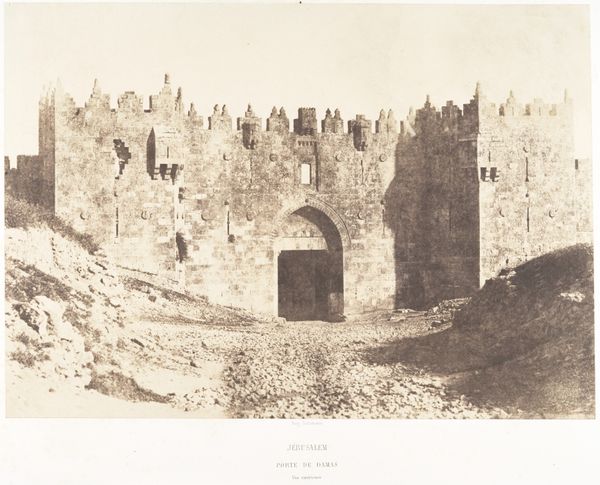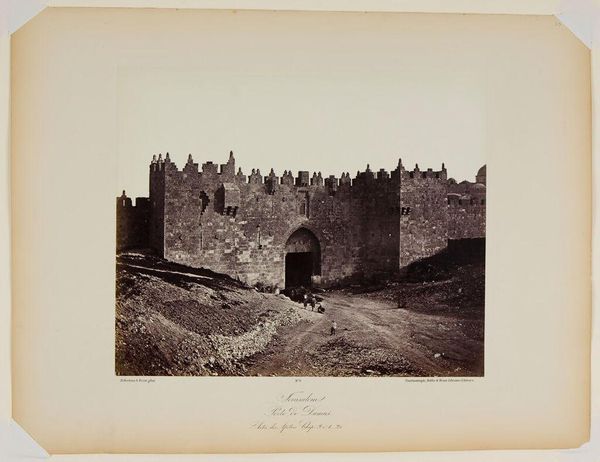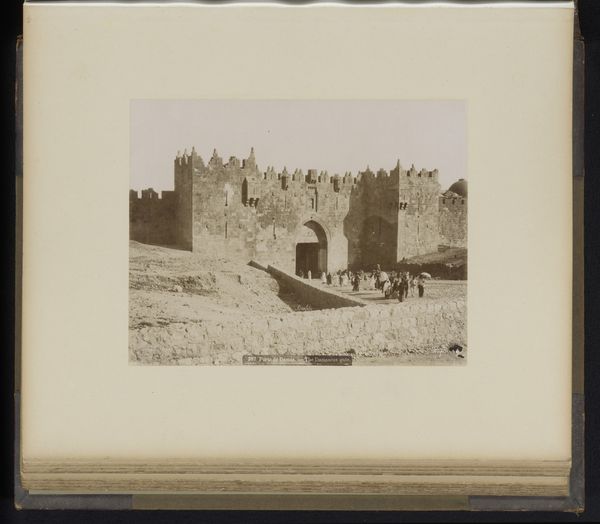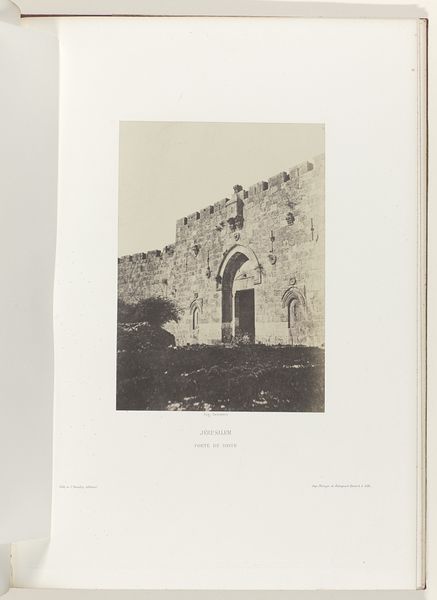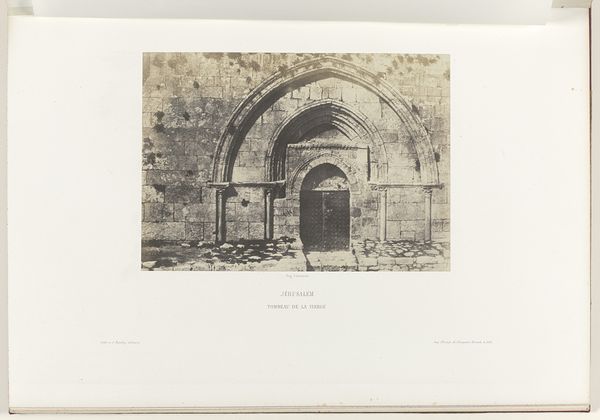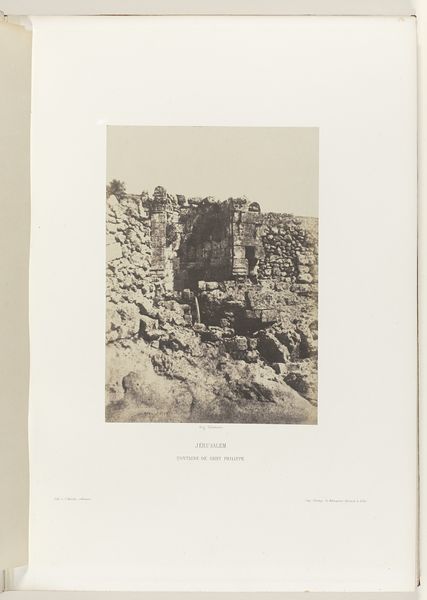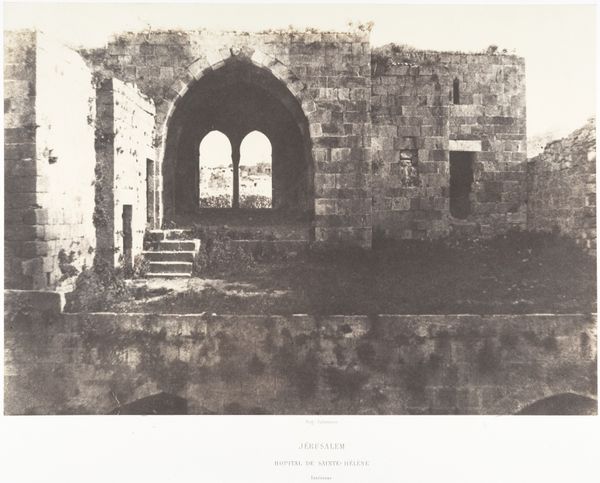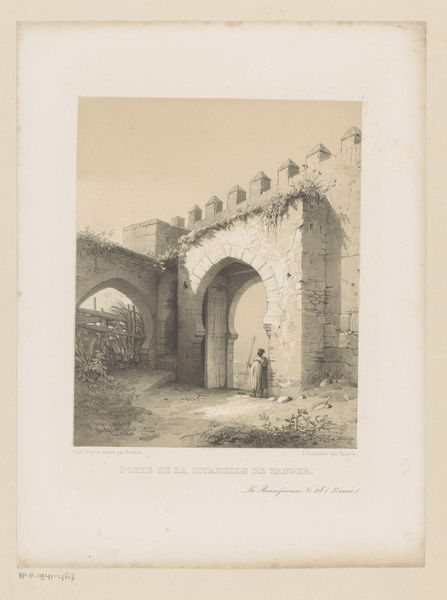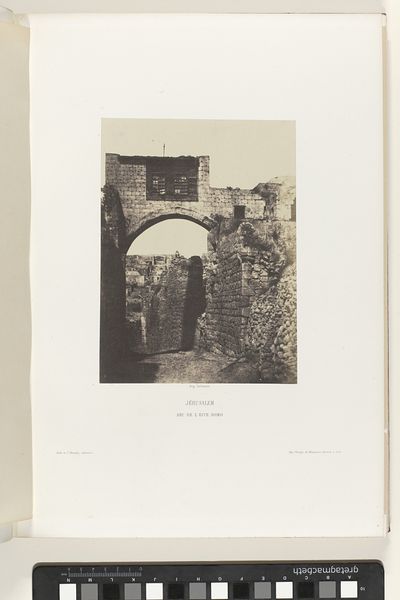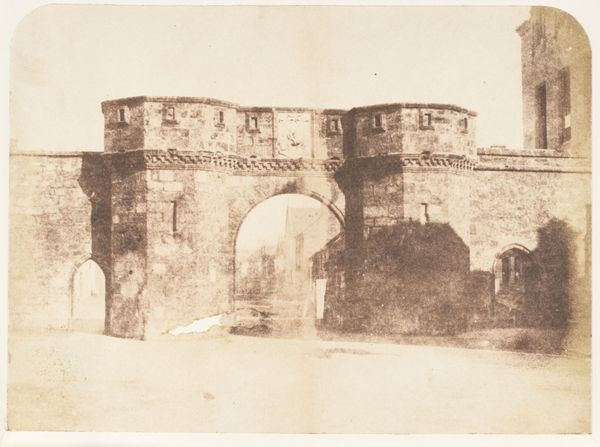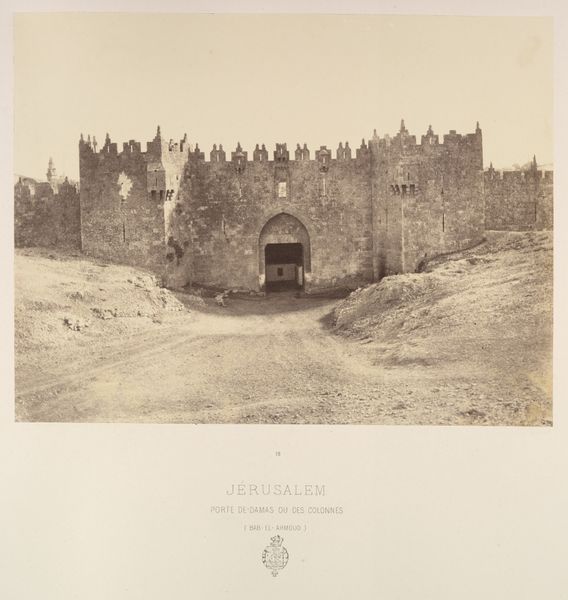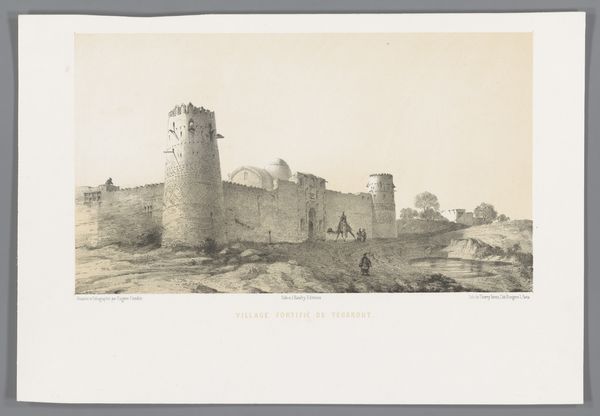
#
pencil drawn
#
aged paper
#
light pencil work
#
homemade paper
#
pencil sketch
#
hand drawn type
#
personal sketchbook
#
sketchbook drawing
#
sketchbook art
#
watercolor
Dimensions: height 151 mm, width 214 mm
Copyright: Rijks Museum: Open Domain
This photograph of the Damascus Gate in Jerusalem was made by Auguste Salzmann sometime in the 1850s. Salzmann was commissioned to produce photographic studies of the Holy Land. But this was no simple act of documentation: instead, it came out of a feverish period of French and European colonial expansion into the region. Salzmann’s images were made to accompany an argument about the true history of the region. His intention was to use photography to prove the archaeological record of the Bible. What might seem like a neutral recording of the architecture of Jerusalem was really about staking a claim on the history of the city and promoting a European understanding of its cultural heritage. The use of photography lent credibility to this project in ways that a painting never could. And so the image became a tool of cultural imperialism. By looking at the institutional history of the French state at this time, we can understand how photographs like this came to be so much more than just a picture.
Comments
No comments
Be the first to comment and join the conversation on the ultimate creative platform.
